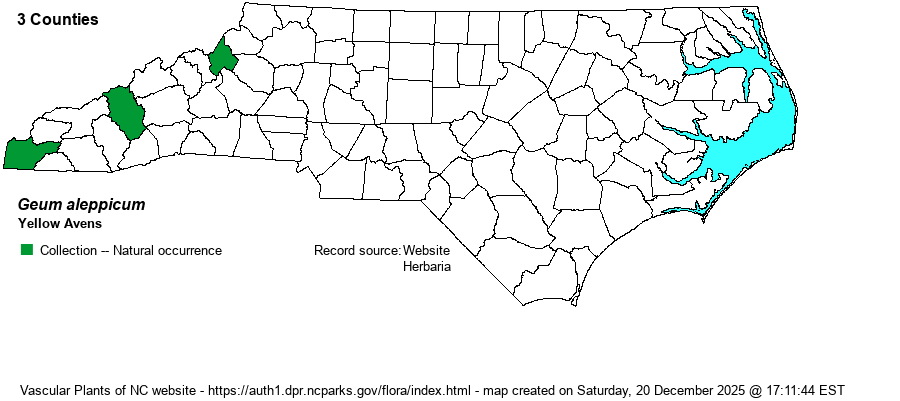| Author | Jacquin | |
| Distribution | Known only from a few old specimens (Avery County), a specimen in 2002 from Cherokee County (Granny Squirrel Gap, determined by B. Sorrie in 2021), a single recent (2003) sighting from Avery County, and a 1982 specimen from Great Smoky Mountains National Park in Haywood County.
This is a widespread Northern and Western species, ranging south to NJ, PA, and IA, and south sparingly in the Appalachians to western NC and eastern TN.
| |
| Abundance | Extremely rare, seemingly barely hanging on in the state, especially as the last report was in 2003. It could perhaps be extirpated, but to be conservative the NCNHP has kept the S1 State Rank. It is a State Endangered species. | |
| Habitat | This is a wetland species, growing in cold water habitats in NC; it is found in high elevation seeps, wet meadows, and boggy spots. | |
| Phenology | Blooms in June and July, and fruits in July and August. | |
| Identification | This is a rather tall herb, reaching about 3-4-feet tall, with a stout stem and a somewhat erect to leaning habit. The plant is quite hirsute on the stem. It has scattered alternate stem leaves that are often 6-8 inches long and pinnately divided, with the terminal and some side leaflets quite large and other side leaflets being tiny. All are strongly toothed or dissected and very hairy. As with some Agrimonia species, there are usually some small leaflets in-between much larger ones. The upper part of the stem is branched, and at the tips of the handful of branches are solitary bright yellow flowers, somewhat buttercup-like in appearance. The 5 petals are rounded and the spread flower is about 3/4-inch across. G. laciniatum is quite similar, and also grows in cold boggy places, but it has smaller petals that are white. There are other similar species that have either white or creamy yellow flowers, but none have the rich, deep yellow petals as found in this species. Owing to the great rarity of the species in NC, do not attempt to identify the species solely by vegetative characters, though an identification might be made from the fruit (achene), but see keys such as Weakley (2018) when using the fruit for confirmation. To an inexperienced biologist, this species in bloom might look very much like a buttercup (Ranunculus) species. | |
| Taxonomic Comments | Some references name subspecies or varieties for this widespread species, but Weakley does not.
| |
| Other Common Name(s) | Common Avens | |
| State Rank | S1 | |
| Global Rank | G5 | |
| State Status | E | |
| US Status | | |
| USACE-agcp | FACW link |
| USACE-emp | FAC link |

